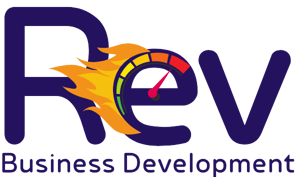In his recent white paper, ESA Chief of Staff Ryan Manley' draws parallels between parenting and...
Industry in turmoil
Feel free to say, “Well, no kidding Captain Obvious” but given the challenges to the foodservice industry over the last four years, Bain’s Consumer Products Report for 2024 bears discussion.
Bain surveyed 120 executives in consumer products companies, who set out six priorities for the year. Though all six intrigue me, this one applies to foodservice even better than to CPG and retail: 64% rated “Accelerating next-generation capabilities through tomorrow’s operating model” as a top priority.
What does tomorrow's operating model look like? Here’s what Bain said:
“The operating model challenge this year centers on dynamically deploying resources in the face of continued turbulence and talent scarcity, with new growth as the goal. That means hunting for ways to free up not just funds but also talent. New technologies will create efficiencies that can be reinvested in business transformation; so will moving to a platform-services approach that consolidates some cross-cutting activities into centers of excellence or entrusts them to an outside party. [Companies] should resource teams and budgets dynamically through the year, while also empowering frontline teams to test and learn at speed. Crucially, the best talent simply must be attached to the biggest opportunities.”
Now step back and consider what is happening in the foodservice channel – mass layoffs, operators and manufacturers illiquidity, labor shortages for drivers, warehouse and restaurant staff, inflationary pressures on everyone and then pile on the recent broker consolidation with the roll up of Key Impact and Advantage Waypoint into one entity that is private equity owned.
What do you get? You get an industry in turmoil.
And yet, “turmoil” implies movement and action.
What is instead happening in foodservice broadly? NOTHING.
The decision-making paralysis is unlike anything I have ever seen. Worse even than 2009.
Even more puzzling is people’s unwillingness to acknowledge that the way the value chain works for foodservice has fundamentally changed yet by and large, all of the players (but especially manufacturers) continue to try and do things the same way.
Broker consolidation? Well, crap. What I keep hearing, from senior level folks across the industry, is that they are considering two paths.
- Guess I’ll have to find another broker. But they won’t be able to take all my products because I have 500 SKUs across 10 categories and there are too many conflicts.
- Or perhaps I’ll go direct. Again. Which means recruiting, hiring, onboarding, training, managing and sometimes managing out.
I’m exhausted by watching the amount of energy being wasted right now, talking in circles. The same tools, sales pitches, technology, and marketing practices that worked in 2019 won’t work in 2024.
Recently, someone told me that “the industry knows you don’t like brokers, Stephanie.” That is factually untrue. I do, however, believe the expectations placed on brokers are unfair, and so is the way they’re paid (to anyone other than the top ten principles).
Unfortunately, the industry tends to breed “Broker Pokers,” because it’s easy to attack broker reporting and results, rather than creating a partnership that pays and treats them fairly. This will not be fixed with the current model and further consolidation is only going to make it worse -- and good grief the complexity of creating a regional structure.
But you know what? Not my circus, not my monkeys. I purposely set out nine years ago to build a company that would help companies launch, scale, and then retain customers.
There is a third path out of the channel’s current no-action turmoil. 
What if…you turned it upside down, shook it up and reviewed your entire operating model for foodservice sales and marketing?
What if…there were a group of people with experience working for the best and largest companies across manufacturing, distribution, and restaurant operations, with a product that can help you maintain or gain momentum in the short term while you create an organization built for the future?
Given what is happening right now, I want to extend the opportunity for anyone in the middle of a transition, or thinking about how they will be successful in 2024, to reach out. But only if you genuinely want to update your operating model. We’re not doing it old school – it’s too late for that.
Read what Bain said about tomorrow’s operating model again. Are you interested in “dynamically deploying resources in the face of continued turbulence and talent scarcity, with new growth as the goal”?
Our REV program can help you “consolidate some cross-cutting activities into centers of excellence,” and is designed to ensure you can attach your “best talent … to the biggest opportunities.” Reach out for details about REV or the many other options -- including ones we might create just for you -- to help you step out of the turmoil and make 2024 a resounding success.
.png?width=400&height=400&name=Untitled%20(600%20%C3%97%20600%20px).png)

.jpg?height=200&name=Webinars%20LinkedIn%20Ads%20(17).jpg)

.jpg?height=200&name=Big%20Mistake%20(1).jpg)
-1.jpg?height=200&name=Untitled%20design%20(16)-1.jpg)